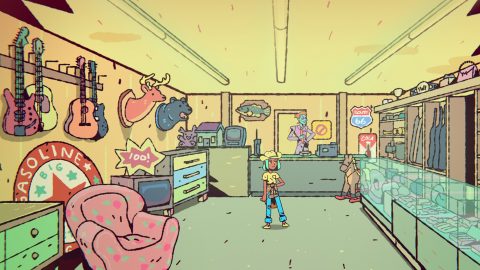
If you’ve ever tuned into one of Riot’s European League Of Legends broadcasts, you might have found yourself a little confused. While League Of Legends is a fairly serious MOBA, the broadcasts are anything but, with comedy music videos, bizarre memes and even a 10,000 seater stadium broadcast kicking off with a Rock, Paper, Scissors fight that pokes fun at the widely-mocked rumour that two of the broadcasters on that week’s stream might have got into a fight behind the scenes, during their playing days.
- READ MORE: The 8 best PC games you need to play in 2022
It can be a surreal watch, but Trevor ‘Quickshot’ Henry – a League Of Legends commentator that has become the face of the game’s European esports – says this is by design, and it happened when Riot’s European circuit rebranded from the Europe League Championship Series (EU LCS) to the League Of Legends European Championship (LEC) in 2019.
“I think if you look at the trajectory of LEC, specifically when we rebranded and launched, we were very tentative and dipped our toes in the water with silly comedic ‘cringy content’,” admins Henry. “Once we saw the success and the response from fans, that got weaponised, and now we have a division of weaponised cringe creatives.” Henry is happy to own up to the fact that the broadcast talent now, in collaboration with Riot, look at ways they can play up to the unique in-jokes, memes and pure silliness that will appeal to fans of League Of Legends. Which brings us back to the Rock, Paper, Scissors competition.

“When you see the opening ceremony of a 10,000-seat arena for our first summer finals in three years, and we open with a Rock, Paper, Scissors competition, you show me other broadcast that is bold enough to pull that off. More importantly, I think it lands with the fans.”
Things amped up for the LEC team during the pandemic. The team were already filling the broadcast with skits and songs, but translating that sense of fun to something that people could do from their various homes around Europe was a unique challenge.
Henry recalls that as one of the more experienced members of the team, the pandemic and its accompanying lockdowns were a problem that he felt he had to solve. “You don’t have time to wallow in the live broadcast and entertainment space,” Henry admitted. “What you have to do is try to find a way to make things work. So I think at the beginning of the pandemic, the LEC had started to curate a unique identity and make content that was quite special. And I think the music video we made from everybody’s bedrooms on cell phones with tripods is a great testament to what our approach was, it was like okay, there are new parameters there are new rules. We put our heads together and thought rather than get caught in a trap we just had to try to make the best content possible with what we could make happen.”
If anything, the time locked away inside helped the team streamline their creative practices. “It’s very risky!” admits Henry. “You know, there’s no guidebook, there’s no process, there’s no documentation on how to weaponize cringe and make it successful. But what you do have is a lot of creative individuals from different departments, different teams that collaborate and bounce ideas off one another. When we have really flesh out these concepts, we always vet them against different departments to ask ‘do you think this will work?’ with a different perspective or for different audiences, and more and more regularly, and recently, we also have to get legal involved, get HR involved, get PR involved.”
Henry says the LEC broadcast team now have a company culture of “let’s think about it,” where the team think their ideas through and make sure they’re open to trying something unusual, but also open to the idea of mitigating risk and trying to make content that other companies might shy away from for being too close to the edge. “Unless you’re willing to fail by trying something new, you’re never going to push the boundaries,” says Henry. “I think that’s the kind of ethos that we’ve built around the LEC broadcast.”

Henry explains that taking risks is a core part of the job for him to ensure that he’s always doing the best job he can do. When things go badly? That’s all part of the process. “I have a personal philosophy, that I kind of promote and push to all of the casters I work with, where there’s this concept of good credit and spending that credit,” explains Henry. “We’re trying to make consistent, high-quality, appropriate work. You pull it off and you build that trust and get credit. Then, every now and again you spend some of that goodwill to make a bold call like an 80s music video. If you make something that doesn’t resonate, you lose credit, but hopefully people say ‘okay, well they hit nine of the last 10 shots, I’ll just wait for the next one.’”
At the end of the day, everything the LEC creates is produced with the fans in mind. “Ultimately, if people don’t tune into our broadcasts, if people don’t play our game, we won’t have a job,” says Henry. “You know, it’s a free-to-play video game. It’s a free-to-watch broadcast. So the support is what drives everything.”
The LEC season is finished for the year, but you can catch some of the region’s casters at Worlds 2022 – here’s when to watch it.
The post How “weaponised cringe” helped Riot’s LEC find its identity appeared first on NME.




